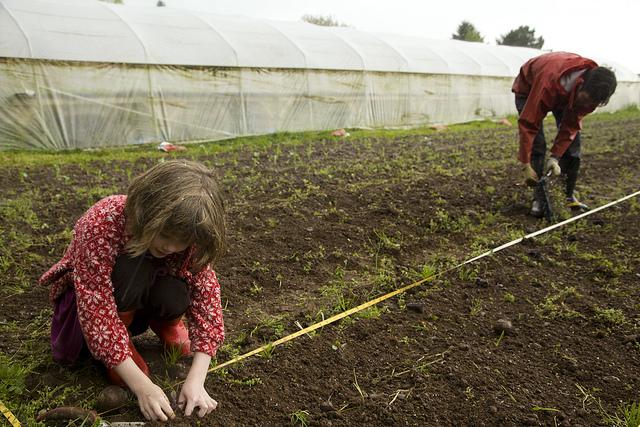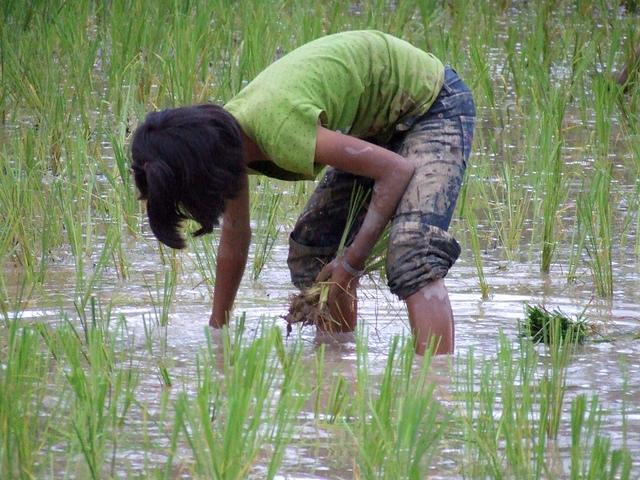Sustainable Farming: small steps to a big tomorrow
Sustainable farming or in a broader term, Sustainable agriculture is using farming practices considering the ecological cycles. It is also sensitive towards the microorganisms and their equations with the environment at large. In simpler terms, sustainable farming is farming ecologically by promoting methods and practices that are economically viable, environmentally sound and protect public health. It does not only concentrate on the economic aspect of farming, but also on the use of non-renewable factors in the process thoughtfully and effectively. This contributes to the growth of nutritious and healthy food as well as bring up the standard of living of the farmer.
Our environment, and subsequently our ecology have become an area of concern for us over the last few decades. This has increasingly led us to contemplate, innovate and employ alternate methods or smaller initiatives to save our ecology. One such initiative is sustainable farming. It simply means production of food, plants and animal products using farming techniques that prove to be beneficial for public health and promote economic profitability. It draws and learns from organic farming.

Sustainable farming or Sustainable agriculture helps the farmers innovate and employ recycling methods, this apart from the conventional perks of farming. A very good example of recycling in sustainable farming would be the crop waste or animal manure. The same can be transformed into fertilizers that can help enrich the soil. Another method that can be employed is crop rotation. This helps the soil maintain its nutrients and keeps the soil rich and potent. Collection of rainwater via channeling and then its utilization for irrigation is also a good example of sustainable farming practices.
Benefits of Sustainable Farming
1. Environment Preservation
2. Economic Profitability
3. Most efficient use of non-renewable resources
4. Protection of Public Health
5. Social and Economic Equity
Sustainable Farming Methods or Practices
Let us see various methods or practices of Sustainable farming in detail:
1. Make use of Renewable Energy Sources: The first and the most important practice is the use of alternate sources of energy. Use of solar, hydro-power or wind-farms is ecology friendly. Farmers can use solar panels to store solar energy and use it for electrical fencing and running of pumps and heaters. Running river water can be source of hydroelectric power and can be used to run various machines on farms. Similarly, farmers can use geothermal heat pumps to dig beneath the earth and can take advantage of earth’s heat.
2. Integrated pest management: Integrated pest management a combination pest control techniques for identifying and observing pests in the initial stages. One needs to also realize that not all pests are harmful and therefore it makes more sense to let them co-exist with the crop than spend money eliminating them. Targeted spraying works best when one need to remove specific pests only. This not only help you to spray pest on the selected areas but will also protect wildlife from getting affected.
3. Crop Rotation: Crop rotation is a tried and tested method used since ancient farming practices proven to keep the soil healthy and nutritious. Crop rotation has a logical explanation to it – the crops are picked in a pattern so that the crops planted this season replenishes the nutrients and salts from the soil that were absorbed by the previous crop cycle. For example, row crops are planted after grains in order to balance the used nutrients.
4. Avoid Soil Erosion: Healthy soil is key to a good crop. Age old techniques like tilling the land, plowing etc still work wonders. Manure, fertilizers, cover crops etc also help improve soil quality. Crop rotations prevent the occurrence of diseases in crops, as per studies conducted. Diseases such as crown rot and tan spot can be controlled. Also pests like septoria, phoma, etc can be eliminated by crop rotation techniques. Since diseases are crop specific, crop rotation can work wonders.
5. Crop Diversity: Farmers can grow varieties of the same crop yielding small but substantial differences among the plants. This eases financial burdening. This process is called crop diversity and its practical use is on a down slide.
6. Natural Pest Eliminators: Bats, birds, insects etc work as natural pest eliminators. Farmers build shelter to keep these eliminators close. Ladybugs, beetles, green lacewing larvae and fly parasites all feed on pests, including aphids, mites and pest flies. These pest eliminators are available in bulk from pest control stores or farming supply shops. Farmers can buy and release them on or around the crops and let them make the farm as their home.

7. Managed Grazing: A periodic shift of the grazing lands for cattle should be maintained. Moving livestock offers them a variety of grazing pastures. This means they will receive various nutrients which is good for them. The excreta of these animals serves as a natural fertilizer for the land. Change of location also prevents soil erosion as the same patch of land is not trampled upon constantly. Also by grazing in time and mowing the weeds can be gotten rid off before they produce more seeds and multiply.
8. Save Transportation Costs: Targeting the sales of the production in the local market saves transportation and packaging hassles. It also eliminates the need of storage space. Therefore when stuff is grown and sold in local markets, it makes a community self sufficient, economically sound, saves energy and doesn’t harm the environment in any way.
9. Better Water Management: The first step in water management is selection of the right crops. One must choose the local crops as they are more adaptable to the weather conditions of the region. Crops that do not command too much water must be chosen for dry areas. Irrigation systems need to be well planned otherwise they lead to other issues like river depletion, dry land and soil degradation. One can also build rainwater harvesting systems to store rainwater and use them in drought prevailing conditions. apart from that municipal waste water can be used for irrigation after recycling.
10. Removal of Weeds Manually: Farmers having small farms can use their hands to remove weeds from crops where machines can’t reach or where crops are too fragile. This is quite a labor intensive task and is not suitable for large farms. Apart from this, a farmer also has the option to burn the old crops so that weeds do not produce seeds and destroy rest of the crops. However, that will cause pollution in air and cal also affect the soil quality.
Sustainable energy is not only economical but it also helps in the conservation of our natural resources. Sustainable farming also helps reduce the need for chemicals fertilizers and pesticides. This makes the process more organic and clean.

